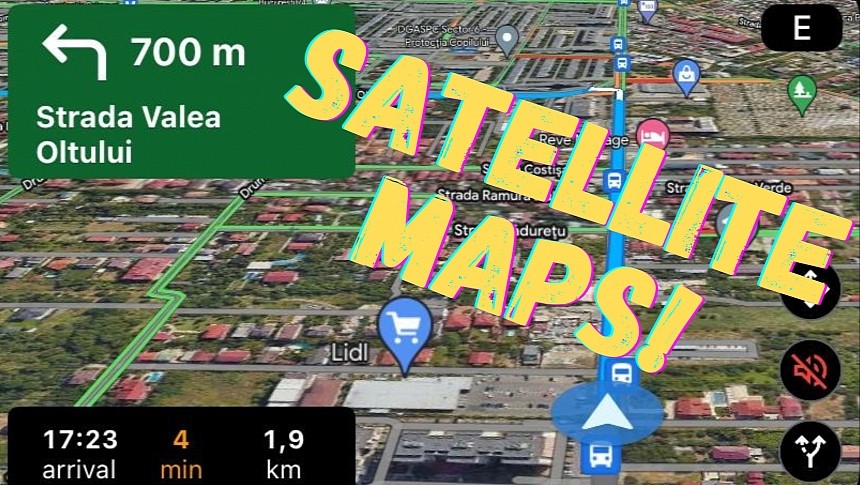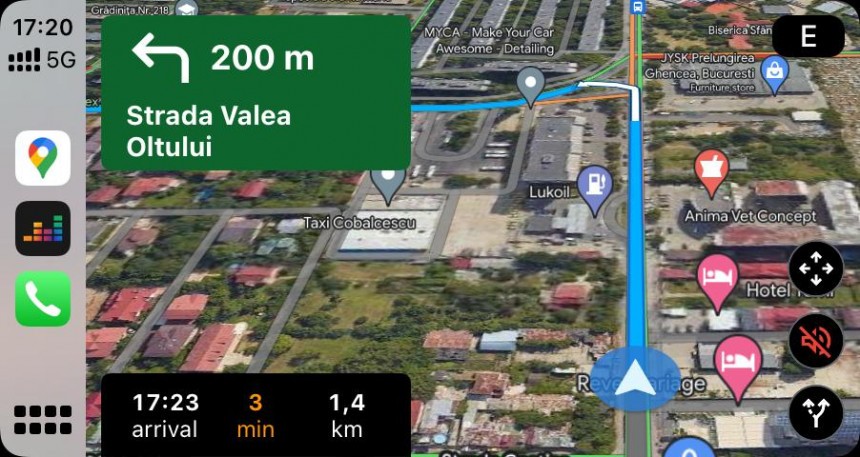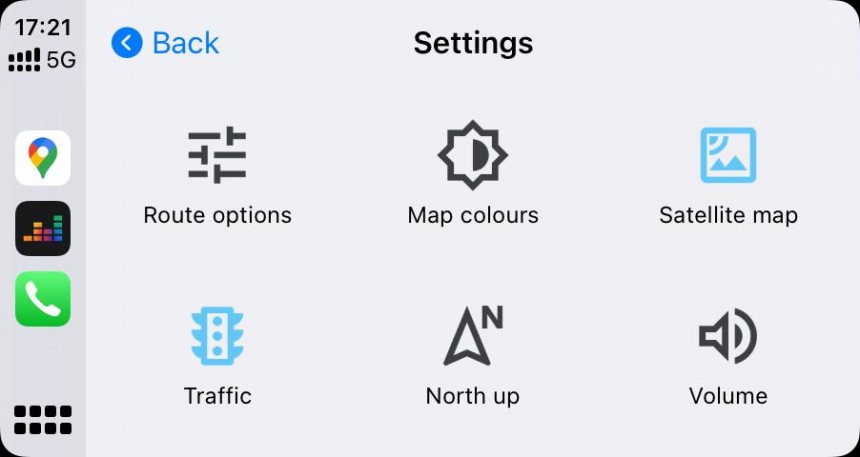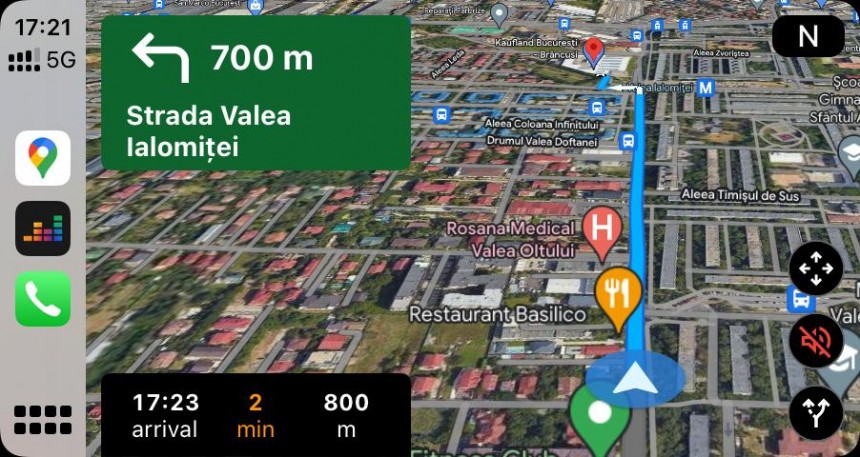Waze and Apple Maps are two fantastic apps that make it easier, safer, and more convenient to find a destination and drive to it, but Google Maps has a little something that makes the switch impossible.
All three apps look similar on paper, but when exploring them closely, you'll quickly understand they're completely different beasts.
First of all, Waze is a traffic navigation app. It does not support offline navigation and needs a permanent Internet connection to provide turn-by-turn guidance. The incident reporting system is its number one feature, allowing users to flag the location of accidents, potholes, traffic jams, speed traps, and roadkill.
Waze uses this data to generate warnings for the other motorists running the app, so eventually, the application makes every trip more predictable. Additionally, user reports help Waze generate a map of potential slowdowns, looking for routes that avoid those places where you could spend time in sitting traffic.
Apple Maps is exclusive to Apple users. It's only available on iPhone, iPad, and Mac, so you can't install it if you own an Android device. Apple Maps also uses an approach similar to Google Maps but lacks essential functionality, making using it rather confusing at certain times.
For example, Apple Maps still lacks offline maps, so despite serving as a fully featured alternative to Google Maps, it offers turn-by-turn guidance only when you have a working Internet connection. The feature will land for Apple Maps users next month with the release of iOS 17 (available only for iPhone XS and newer, so owners of older iPhone models still won't get offline maps).
Google Maps is an alternative to these apps (or, better said, they are alternatives to Google Maps), with the search giant struggling to offer a complete feature package. The company achieved this purpose with a well-rounded lineup of capabilities focused on turn-by-turn navigation online and offline.
But while navigating without an Internet connection is such a huge feature, the thing that sets Google Maps apart from the rest of the crowd whenever I want a driving companion is the support for satellite navigation.
Google Maps' satellite navigation allows users to navigate to a configured location using a satellite map view.
The satellite layer relies on satellite (obviously!) imagery, so you get a clearer view of the location where you're at. Satellite maps also make observing all your surroundings, such as buildings, secondary streets, and intersections, eventually making navigation to a specific place easier.
Google Maps uses satellite maps for navigation and exploration, and you can freely enable the dedicated layer from its interface. On CarPlay and Android Auto, you get a special satellite mode toggle that requires a quick tap to enable.
The same satellite maps are integral to the immersive view in Google Maps. The feature fuses maps, satellite imagery, historical traffic data, weather information, and other details to create a realistic simulation of a location.
It may sound weird to those who've never used Apple Maps, but the application comes with satellite maps but does not allow navigation in satellite mode.
Apple Maps allows users to explore the world using satellite maps, so you can see almost the same content as in Google Maps (using Apple's satellite imagery providers). However, once you enable turn-by-turn guidance, Apple Maps turns off the satellite maps, returning to the default map layer available in the app.
Apple never commented on this feature, and the upcoming iOS 17 doesn't include any change. Its full focus is the offline map integration and a bunch of tools for EV owners, but things would remain unchanged as far as satellite navigation is concerned.
Waze lacks satellite maps, as the application exclusively uses the standard map view for navigation. I'm already very familiar with the Waze interface, which I still find rather cartoonish, but the parent company has no intention to change it.
The satellite view is not part of Waze's plan, as the company believes its current maps serve their purpose right, making navigation more straightforward.
In a 2021 feedback response, the company said that "we will not be adding a satellite layer to the client" for a simple reason. The Waze team says the satellite layer is great for exploration and offline capabilities, but it won't help improve the driving experience. The Google-owned company says that "we don't think it's going to benefit drivers on the go that much," so it has no intention to add it in a future update.
As a result, Google Maps is the only big navigation app that offers satellite navigation, with all its alternatives seemingly ignoring such capabilities. Switching from Google Maps to Apple Maps or Waze for someone who wants satellite navigation is almost impossible now and in the long term, as most competitors worldwide stick with the default map layer, offering a standard view during guidance.
First of all, Waze is a traffic navigation app. It does not support offline navigation and needs a permanent Internet connection to provide turn-by-turn guidance. The incident reporting system is its number one feature, allowing users to flag the location of accidents, potholes, traffic jams, speed traps, and roadkill.
Waze uses this data to generate warnings for the other motorists running the app, so eventually, the application makes every trip more predictable. Additionally, user reports help Waze generate a map of potential slowdowns, looking for routes that avoid those places where you could spend time in sitting traffic.
Apple Maps is exclusive to Apple users. It's only available on iPhone, iPad, and Mac, so you can't install it if you own an Android device. Apple Maps also uses an approach similar to Google Maps but lacks essential functionality, making using it rather confusing at certain times.
For example, Apple Maps still lacks offline maps, so despite serving as a fully featured alternative to Google Maps, it offers turn-by-turn guidance only when you have a working Internet connection. The feature will land for Apple Maps users next month with the release of iOS 17 (available only for iPhone XS and newer, so owners of older iPhone models still won't get offline maps).
Google Maps is an alternative to these apps (or, better said, they are alternatives to Google Maps), with the search giant struggling to offer a complete feature package. The company achieved this purpose with a well-rounded lineup of capabilities focused on turn-by-turn navigation online and offline.
But while navigating without an Internet connection is such a huge feature, the thing that sets Google Maps apart from the rest of the crowd whenever I want a driving companion is the support for satellite navigation.
Google Maps satellite navigation
The satellite layer relies on satellite (obviously!) imagery, so you get a clearer view of the location where you're at. Satellite maps also make observing all your surroundings, such as buildings, secondary streets, and intersections, eventually making navigation to a specific place easier.
Google Maps uses satellite maps for navigation and exploration, and you can freely enable the dedicated layer from its interface. On CarPlay and Android Auto, you get a special satellite mode toggle that requires a quick tap to enable.
The same satellite maps are integral to the immersive view in Google Maps. The feature fuses maps, satellite imagery, historical traffic data, weather information, and other details to create a realistic simulation of a location.
Apple Maps satellite navigation
Apple Maps allows users to explore the world using satellite maps, so you can see almost the same content as in Google Maps (using Apple's satellite imagery providers). However, once you enable turn-by-turn guidance, Apple Maps turns off the satellite maps, returning to the default map layer available in the app.
Apple never commented on this feature, and the upcoming iOS 17 doesn't include any change. Its full focus is the offline map integration and a bunch of tools for EV owners, but things would remain unchanged as far as satellite navigation is concerned.
Waze satellite maps
The satellite view is not part of Waze's plan, as the company believes its current maps serve their purpose right, making navigation more straightforward.
In a 2021 feedback response, the company said that "we will not be adding a satellite layer to the client" for a simple reason. The Waze team says the satellite layer is great for exploration and offline capabilities, but it won't help improve the driving experience. The Google-owned company says that "we don't think it's going to benefit drivers on the go that much," so it has no intention to add it in a future update.
As a result, Google Maps is the only big navigation app that offers satellite navigation, with all its alternatives seemingly ignoring such capabilities. Switching from Google Maps to Apple Maps or Waze for someone who wants satellite navigation is almost impossible now and in the long term, as most competitors worldwide stick with the default map layer, offering a standard view during guidance.










